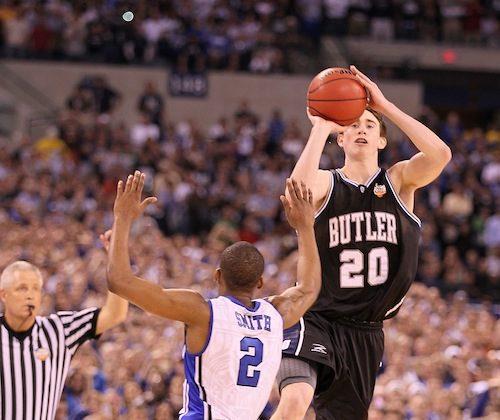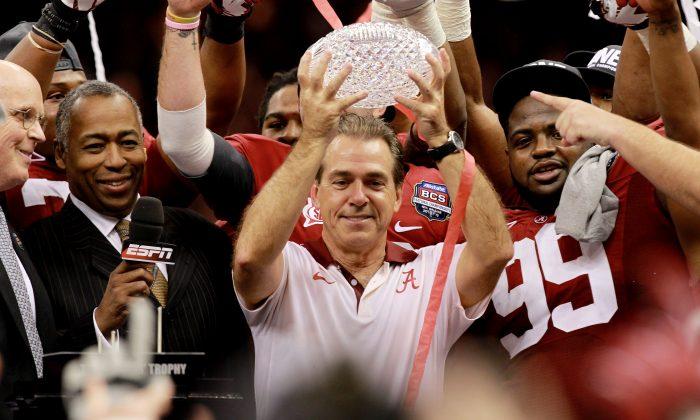Every year the NCAA Tournament provides some upsets. Some are bigger than others. When the bigger upsets continue into the later rounds the team, usually a small and somewhat-unknown school, is termed a “Cinderella.”
With the first week of this year’s NCAA Tournament over, just three “Cinderella” teams are left: 13th-seeded Ohio, 11th-seeded N.C. State, and 10th-seeded Xavier. Ohio is clearly the biggest “Cinderella” of the three of them though as N.C. State, while it hasn’t been to the tournament since 2006, is a much bigger school. And though Xavier may be a mid-major, its made the tournament 11 of the last 12 seasons.
With that in mind, what were the biggest Cinderellas since the tournament expanded to 64 teams in 1985? For purposes of ranking them, how far the school goes, what seed they were in the tournament, how good or poor their basketball tradition is, the size of the school, the prestige of their conference, and how memorable the run was all are taken into account. Onto the list:
10. Gonzaga, 1999, Seeded 10th finished with a 28-7 record; Beat (7) Minnesota 75–63, (2) Stanford 82–74, (6) Florida 73–72, Lost in Regional Finals to (1) Connecticut 67–62: The first of now 14 straight trips to the NCAA Tournament this run originally put the team on the map. In coach Dan Monson’s final season the Bulldogs entered the tourney with just one prior appearance (1995). They left courtesy of the national champion Huskies.
9. Rhode Island, 1998, Seeded 8th finished with a 25-9 record; Beat (9) Murray State 97–74, (1) Kansas 80–75, (13) Valparaiso 74–68, Lost in Regional Finals to (3) Stanford 79–77: Head coach Jim Harrick was in his first season at Rhode Island when the team pulled off this unexpected run. Featuring guards Cuttino Mobley and Tyson Wheeler the main part of the Rams’ run was stunning 35-4 Kansas in the second round. Two games later, the team was poised to make the Final Four as it actually led Stanford 66–60 with two minutes remaining before Cardinal guard Arthur Lee scored 13 points in the final 120 seconds to key make a dramatic comeback win.
8. LSU, 1986, Seeded 11th finished with a 26-12 record; Beat (6) Purdue 94–87, (3) Memphis State 83–81, (2) Georgia Tech 70–64, (1) Kentucky 59– 7, Lost in National Semi Finals to (2) Louisville 88–77: The Tigers were just 9-9 in the SEC in 1986—good for a fifth-place finish—when they made their surprising run to the Final Four, becoming the lowest seed ever to advance that far. Nearly every win was a shocker but the biggest was beating Kentucky—who had already beaten them three times already that season.
7. Loyola Marymount, 1990, Seeded 11th finished with a 26-6 record; Beat (6) New Mexico State 111–92, (3) Michigan 149–115, (7) Alabama 62–60, Lost in Regional Finals to (1) UNLV 131–101: The Lions made headlines that year in averaging 122.8 points per game and set a tournament record with their 149 points and 21 3-pointers against Michigan in the second round. All this despite playing in the tournament just a couple weeks after teammate Hank Gathers on-court collapse and subsequent death.
6. Davidson, 2008, Seeded 10th finished with 29-7 record; Beat (7) Gonzaga 82–76, (2) Georgetown 74–70, (3) Wisconsin 73–56, Lost in Regional Finals to (1) Kansas 59–57: Davidson guard Stephen Curry’s coming out party came in these four games as he had 40 points against Gonzaga, 30 against Georgetown helping the team erase an 11-point halftime deficit, 33 against Wisconsin, before Kansas slowed him to just 25 points, though the Wildcats got off a guarded 3-pointer at the buzzer that just missed.
5. Villanova, 1985, Seeded...
5. Villanova, 1985, Seeded 8th finished with a 25-10 record; Beat (9) Dayton 51–49, (1) Michigan 59–55, (5) Maryland 46–43, (2) North Carolina 56–44, (2) Memphis State 52–45, Won National Championship against (1) Georgetown 66–64: Still the lowest-seeded champion ever, the Wildcats were just 9-7 in the Big East, though the conference was at its pinnacle that season sending three teams (St. John’s, Georgetown, and Villanova) to the Final Four. In its upset win over the Hoyas, Villanova shot an incredible 79 percent from the floor (22/28) to shock the defending champs.
4. Virginia Commonwealth, 2011, Seeded 11th finished with a 28-12 record; Beat (11) USC 59–46, (6) Georgetown 74–56, (3) Purdue 94–76, (10) Florida State 72–71, (1) Kansas 71–61, Lost in National Semi Finals to (8) Butler 70–62: Rams shocking run included becoming the first team to advance to the Final Four after starting in the “First Four” play-in round. Most surprising of all their wins was hitting 12 3-pointers against 35-3 Kansas to pull off the upset.
3. Butler, 2011, Seeded 8th finished with a 28-10 record; Beat (9) Old Dominion 60–58, (1) Pittsburgh 71–70, (4) Wisconsin 61–54, (2) Florida 74–71, (11) Virginia Commonwealth 70–62, Lost in National Finals to (3) Connecticut 53–41: The Bulldogs run in 2011 would be ranked as the top “Cinderella” run had the team not put themselves on the map the year before by nearly beating Duke for the title.
2. George Mason, 2006, Seeded 11th finished with a 27-8 record; Beat (6) Michigan State 75–65, (3) North Carolina 65–60, (7) Wichita State 63–55, (1) Connecticut 86–84, Lost in National Semi Finals to (3) Florida 73–58: The Patriots were easily the lowest seeded mid-major to ever reach the Final Four. Their tournament history up to that date consisted of three first-round losses, with the last appearance coming five years earlier.
1. Butler, 2010, Seeded 5th finished with a 33-5 record; Beat (12) UTEP 77–59, (13) Murray State 54–52, (1) Syracuse 63–59, (2) Kansas State 63–56, (5) Michigan State 52–50, Lost in National Finals to (1) Duke 61–59: Despite Butler’s stellar record heading into the tournament (28-4), had either of Bulldog forward Gordon Hayward’s final shots fallen, Butler may have become the most improbable champion in North American major sports history. Competing in the relatively unknown Horizon League the Bulldogs had just eight NCAA tournament wins in their history entering 2010, with none of those coming after the second round, before pushing Duke to the limits for the title.










Friends Read Free